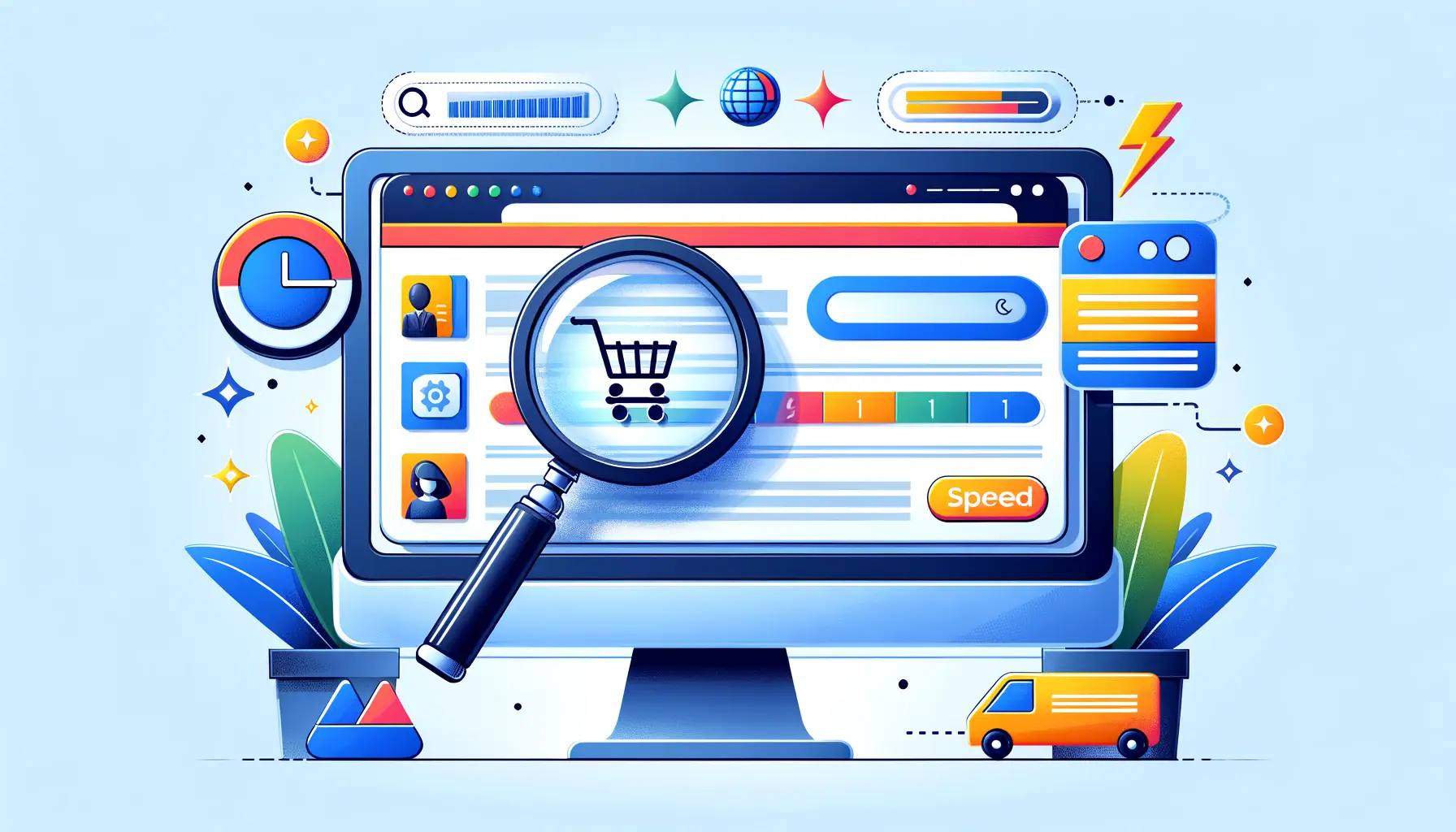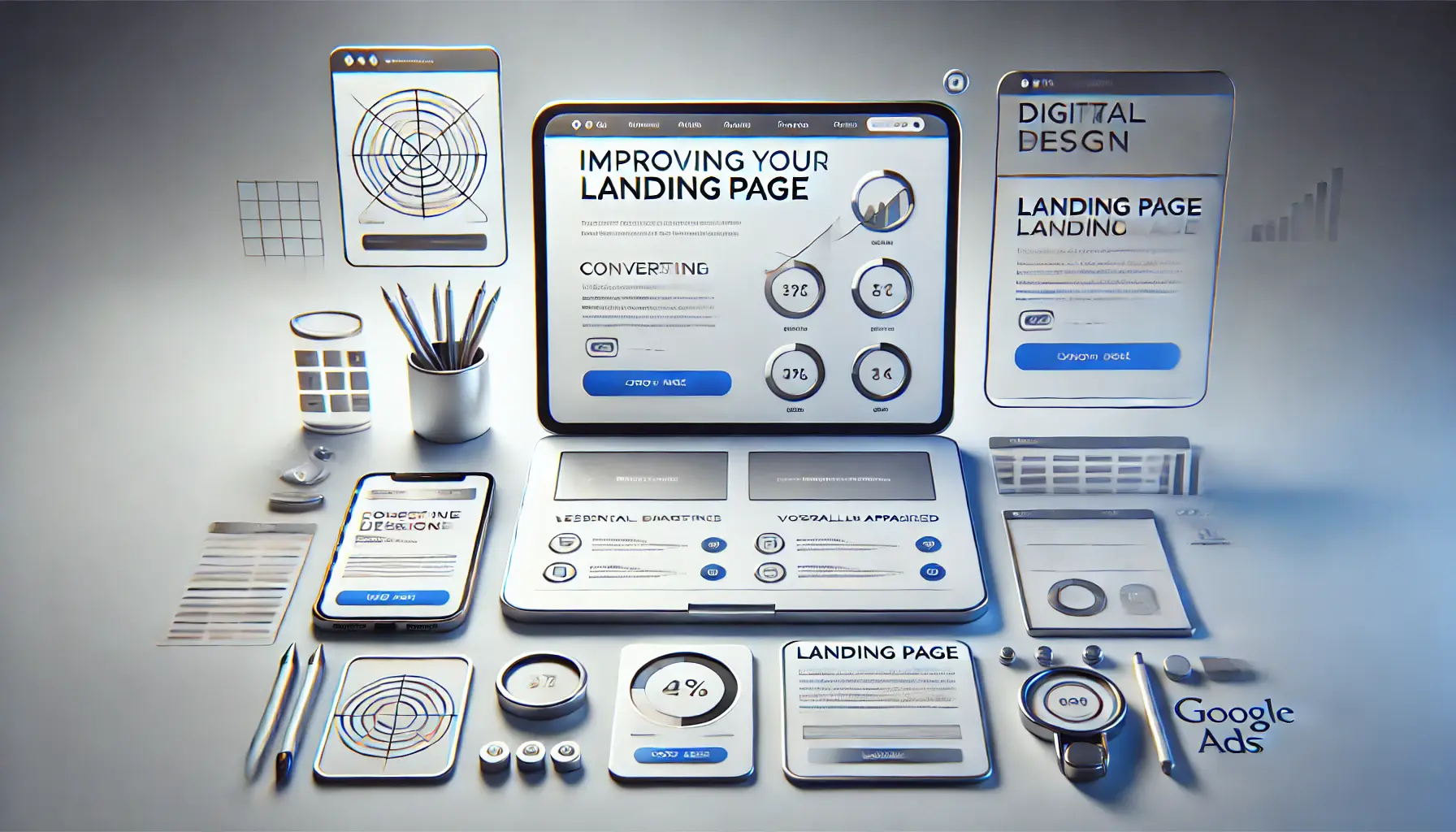Entering the digital marketplace, retailers face the monumental task of standing out in a sea of competitors.
On-page optimization emerges as a beacon of hope, offering a strategic advantage for those willing to dive deep into the nuances of SEO.
This technique isn’t just about improving visibility; it’s about creating a user experience that both search engines and customers love.
By focusing on the intricacies of on-page elements, retailers can significantly enhance their online presence, driving more traffic and ultimately, conversions.
The essence of on-page optimization lies in its ability to make a website more readable for search engines and more engaging for users.
It’s a meticulous process that involves refining the content, architecture, and HTML of a website to rank higher on search engine results pages (SERPs).
For online retailers, this means crafting a site that not only attracts visitors but also converts them into customers.
The journey towards on-page excellence is paved with detailed content, strategic keyword placement, and an unwavering focus on user experience.
- Understanding the Basics of On-page SEO
- Enhancing Site Structure and Navigation
- Mastering Keyword Optimization
- Linking Strategies for Enhanced Authority
- Enhancing User Experience (UX) for SEO
- Content Optimization and Strategy
- Advanced On-page SEO Techniques
- Sealing the Deal with On-page Optimization: A Retailer’s Guide to SEO Success
- On-page Optimization FAQs for Retailers
Understanding the Basics of On-page SEO
At its core, on-page SEO for retailers revolves around enhancing individual web pages to boost the site’s overall ranking in search results.
This involves optimizing both the content and the HTML source code of pages.
A well-optimized page speaks the language of both search engines and users, ensuring that it can be easily found and appreciated by both.
The goal is to make every page a potential entry point for shoppers, guiding them smoothly from discovery to purchase.
Key elements such as title tags, meta descriptions, and headers play a crucial role in on-page SEO.
These components help search engines understand the content and context of your pages, making it easier to match your site with relevant search queries.
For retailers, this means carefully crafting these elements to highlight the uniqueness of their products and offerings.
By doing so, they can improve their visibility in search results, attracting more qualified traffic to their site.
Optimizing Content for Relevance and Engagement
Content is the cornerstone of on-page optimization.
For retailers, this means creating product descriptions, blog posts, and other web content that’s not only informative but also engaging and relevant to their target audience.
High-quality content serves a dual purpose: it helps search engines understand and rank your pages while also providing value to users.
This balance is crucial for driving organic traffic and encouraging users to spend more time on your site.
Moreover, incorporating relevant keywords into your content is essential for on-page SEO success.
However, keyword stuffing, the practice of overloading content with keywords in an unnatural way, is a pitfall to avoid.
Instead, focus on integrating keywords seamlessly into your content, ensuring that it reads naturally and provides genuine value to your audience.
This approach not only improves your search engine rankings but also enhances the user experience, making it more likely for visitors to convert into customers.
Remember, on-page optimization is about making your site more accessible and appealing to both search engines and humans. By focusing on the basics and continuously refining your content and HTML, you can create a solid foundation for your online retail success.
Enhancing Site Structure and Navigation
For online retailers, the structure and navigation of their website can significantly impact both user experience and search engine rankings.
A well-organized site encourages visitors to stay longer, explore more pages, and ultimately make a purchase.
Conversely, a poorly structured site can frustrate users and lead search engines to devalue your content.
Optimizing your site’s structure and navigation is therefore crucial for on-page SEO success.
Key to enhancing site structure is the implementation of a logical hierarchy and clear navigation paths.
This not only aids search engines in crawling and indexing your content effectively but also helps users find the products they are looking for with ease.
Here are some strategies to improve your site’s structure and navigation:
- Use a Simple, Intuitive Navigation Menu: Keep your main navigation menu simple and straightforward. Categories should be clearly labeled, and the overall structure should reflect the range of products offered.
- Implement Breadcrumb Navigation: Breadcrumbs enhance user navigation by displaying the current page’s path relative to the homepage. They also aid search engines in understanding the structure of your site.
- Optimize URL Structure: URLs should be clean, readable, and keyword-rich. A well-crafted URL provides both users and search engines with clear information about the page’s content.
- Improve Site Speed: A fast-loading site is crucial for keeping users engaged. Optimize images, minify CSS and JavaScript, and leverage browser caching to enhance page load times.
Mobile Optimization for Enhanced Accessibility
In today’s digital landscape, mobile optimization is non-negotiable for online retailers.
With an increasing number of consumers shopping on their smartphones, your site must be fully accessible and responsive on mobile devices.
Mobile optimization affects both user experience and search engine rankings, as search engines now prioritize mobile-friendly sites in their results.
To ensure your site is optimized for mobile users, focus on responsive design, which automatically adjusts content layout based on the device’s screen size.
Additionally, consider the following:
- Touch-friendly Navigation: Ensure that all buttons, links, and navigational elements are easily clickable on touch screens.
- Optimized Images: Compress images to reduce loading times without sacrificing quality, ensuring a smooth browsing experience on mobile devices.
- Readable Content: Use legible font sizes and spacing to make content easy to read on smaller screens.
Mobile optimization not only caters to the growing segment of mobile shoppers but also aligns with search engines’ mobile-first indexing policies, making it a critical component of on-page SEO for retailers.
Mastering Keyword Optimization
Keyword optimization is a fundamental aspect of on-page SEO that directly impacts a retailer’s ability to attract the right audience.
It’s about identifying and incorporating the terms and phrases your potential customers use when searching for products online.
However, achieving the perfect balance between keyword relevance, density, and natural language is an art form in itself.
Here’s how retailers can master keyword optimization:
- Conduct Comprehensive Keyword Research: Use tools like Google Keyword Planner or SEMrush to discover the keywords and phrases most relevant to your products and industry. Look for a mix of high-volume terms and long-tail keywords that offer a clearer intent.
- Incorporate Keywords Strategically: Place your primary keywords in title tags, meta descriptions, headers, and throughout the content. Remember, the goal is to integrate them naturally, enhancing readability for your audience.
- Optimize Product Descriptions: Each product description offers a unique opportunity to rank for specific keywords. Craft descriptions that not only sell the product but also include key terms that potential customers might use to find such items.
- Use Keywords in Alt Text for Images: Search engines can’t “see” images but can understand them through alt text. Including relevant keywords in the alt text of product images can improve visibility in image search results.
Understanding User Intent
Going beyond mere keywords, understanding user intent is crucial for on-page optimization.
It’s about anticipating what users are really looking for when they type a query into a search engine.
This insight allows retailers to tailor their content and SEO strategies to meet those needs directly, thereby increasing the chances of conversion.
To align your content with user intent, consider the following:
- Analyze Search Queries: Look at the types of queries that lead users to your site. Are they looking for information, a specific product, or a place to purchase? Tailor your content to answer these queries directly.
- Create Content for Different Stages of the Buyer’s Journey: Not all visitors are ready to buy immediately. Some may be seeking information or comparing options. Create and optimize content that caters to various stages, from awareness to decision.
- Monitor User Engagement: Use analytics to track how users interact with your content. High bounce rates or short session durations may indicate a mismatch between your content and user intent.
By mastering keyword optimization and aligning your content with user intent, you can create a more targeted and effective on-page SEO strategy that not only attracts traffic but also drives conversions.
Linking Strategies for Enhanced Authority
Linking strategies within on-page SEO play a pivotal role in establishing a website’s authority and improving its search engine ranking.
For retailers, this means not only optimizing external links but also focusing on the power of internal linking to create a network of relevancy and value across their site.
Here’s how to leverage linking strategies effectively:
- Internal Linking: Use internal links to connect your content, guiding visitors to related products, blog posts, or categories. This not only enhances user experience by providing additional value but also allows search engines to crawl and index more pages of your site.
- Anchor Text Optimization: The visible, clickable text in a hyperlink (anchor text) should be relevant to the linked page’s content. Use descriptive, keyword-rich anchor text to help search engines understand the context of your links.
- Navigational Links: Ensure your site’s navigation is intuitive and includes links to your main categories and important pages. This helps distribute page authority throughout your site and makes it easier for users to find what they’re looking for.
- Link Value Distribution: Strategically place internal links on high-authority pages to direct some of that authority to key product pages or articles, boosting their visibility in search results.
Optimizing for Click-Through Rate (CTR)
While not directly an on-page SEO element, optimizing for Click-Through Rate (CTR) from search results to your website can significantly impact your SEO performance.
A higher CTR indicates to search engines that your page is relevant and valuable to searchers, potentially improving your rankings.
Here are ways to optimize for CTR:
- Compelling Title Tags: Your title tag should be enticing and include your main keyword. It acts as the first impression of your page, so make it count.
- Meta Description Optimization: Craft a meta description that highlights the unique value proposition of your page. Include a call-to-action (CTA) to encourage clicks.
- Rich Snippets: Utilize schema markup to enhance your search result listings with additional information like ratings, prices, or availability. Rich snippets can make your listing more attractive and informative, leading to higher CTRs.
Effective linking strategies and CTR optimization are crucial components of on-page SEO for retailers. By creating a well-connected internal linking structure and optimizing your listings for search results, you can improve both user experience and search engine visibility.
Enhancing User Experience (UX) for SEO
At the intersection of on-page SEO and digital marketing lies the crucial element of User Experience (UX).
For retailers, ensuring that visitors not only find their website but enjoy their time spent there is paramount.
A positive UX can significantly boost SEO rankings as search engines increasingly prioritize sites that offer value, engagement, and satisfaction to users.
Here’s how to enhance UX for better SEO outcomes:
- Website Design: A clean, attractive design that aligns with your brand can make a significant difference in how users perceive your site. Ensure your website is visually appealing and easy to navigate to keep users engaged.
- Page Speed Optimization: Users expect fast-loading pages. Optimize images, minify code, and leverage browser caching to improve load times. A faster site not only pleases visitors but is also favored by search engines.
- Mobile Responsiveness: With the majority of internet traffic coming from mobile devices, having a mobile-responsive site is non-negotiable. Ensure your website offers a seamless experience across all devices to cater to the mobile audience.
- Interactive Elements: Incorporate interactive elements like videos, sliders, or quizzes to engage users. Interactive content can increase the time spent on your site, which is a positive signal to search engines.
Content Readability and Accessibility
Ensuring that your content is easily readable and accessible to all users is another critical aspect of UX that impacts SEO.
Here are strategies to improve content readability and accessibility:
- Readable Font Sizes and Styles: Use font sizes and styles that are easy to read on all devices. Avoid small fonts or decorative fonts that might be difficult to decipher.
- Content Structure: Break up your content with headings, subheadings, bullet points, and short paragraphs to make it easier to scan and digest.
- Alt Text for Images: Provide descriptive alt text for all images. This not only helps visually impaired users understand the content but also allows search engines to better index your images.
- Contrast and Color: Ensure there is sufficient contrast between your text and background colors for readability. Also, use colors consistently to guide users through your site intuitively.
By focusing on enhancing the user experience through design, speed, responsiveness, and content accessibility, retailers can significantly improve their on-page SEO. A site that delights users is more likely to rank higher in search results, driving more traffic and conversions.
Content Optimization and Strategy
Content stands at the core of on-page SEO, serving as the primary vehicle through which retailers can engage users and signal relevance to search engines.
Optimizing content isn’t just about sprinkling keywords throughout your site; it’s about crafting valuable, relevant, and engaging information that meets the needs and interests of your audience.
Here’s how to elevate your content strategy for SEO:
- Understand Your Audience: Begin by deeply understanding who your audience is, what they care about, and the problems they are trying to solve. This insight allows you to create content that resonates and provides value.
- Create Comprehensive Product Descriptions: For retailers, detailed product descriptions that highlight features, benefits, and use cases can significantly improve on-page SEO. Use natural language that incorporates relevant keywords without overstuffing.
- Utilize Blog Posts: Regularly publish blog posts that address topics related to your products and industry. This not only helps in targeting a broader range of keywords but also establishes your brand as an authority in your niche.
- Incorporate User-Generated Content: Reviews, testimonials, and user stories add authenticity to your site and can improve SEO by naturally incorporating a variety of keywords and phrases used by your customers.
Visual Content and Its Impact on SEO
Visual content, including images, videos, and infographics, plays a significant role in enriching the user experience and enhancing on-page SEO.
Visuals can make complex information more accessible, increase user engagement, and provide additional ranking opportunities through image and video search.
Here’s how to optimize visual content:
- Optimize Image File Names and Alt Text: Use descriptive file names and include alt text for all images, incorporating relevant keywords where appropriate. This helps search engines understand and index your visual content.
- Embed Videos: Incorporate videos that demonstrate products, provide how-to guides, or offer insights related to your industry. Ensure videos are hosted in a way that doesn’t slow down your site’s loading speed.
- Create Infographics: Infographics can distill complex information into an easily digestible format, making them highly shareable and useful for link-building efforts.
- Ensure Visuals Are Mobile-Friendly: With the increasing prevalence of mobile browsing, ensure all visual content is optimized for mobile devices, maintaining quality and load speed.
Neglecting the optimization of visual content can lead to missed opportunities in engaging users and improving search engine rankings. By strategically incorporating and optimizing visual elements, retailers can enhance both the appeal and SEO performance of their site.
Advanced On-page SEO Techniques
While mastering the fundamentals of on-page SEO is crucial for retailers, delving into advanced techniques can provide a competitive edge in the crowded online marketplace.
These strategies go beyond basic optimization, tapping into the finer aspects of SEO to boost visibility, engagement, and conversions.
Here’s a look at some advanced on-page SEO techniques:
- Schema Markup: Implementing schema markup can significantly enhance how your pages are displayed in search results. By providing search engines with explicit context about your content, schema markup can lead to rich snippets, which improve click-through rates and visibility.
- Content Freshness: Regularly updating your content signals to search engines that your site is relevant and up-to-date. This doesn’t always mean creating new content from scratch but can involve refreshing existing pages with current information, statistics, and keywords.
- Page Segmentation: Organizing content into logical segments helps search engines understand the hierarchy and relevance of information on a page. Use headings, subheadings, and layout design to clearly delineate sections and prioritize content.
- Latent Semantic Indexing (LSI) Keywords: Incorporating LSI keywords—terms and phrases that are semantically related to your primary keywords—can help improve content relevance and context, enhancing your visibility for a broader range of search queries.
Optimizing for Voice Search
With the rise of digital assistants and smart speakers, optimizing for voice search has become an essential consideration for retailers.
Voice search queries tend to be longer, more conversational, and often posed as questions.
Here’s how to optimize your content for voice search:
- Focus on Natural Language: Incorporate conversational phrases and question-based keywords into your content to match the natural language used in voice searches.
- Create FAQ Pages: FAQ pages that address common questions related to your products and industry can capture voice search queries effectively. Structure these pages with clear questions and concise answers.
- Local SEO Optimization: Many voice searches are local in nature, such as “where to buy [product] near me.” Ensure your local SEO is strong by maintaining up-to-date listings on Google My Business and other local directories.
Embracing advanced on-page SEO techniques, including schema markup, content freshness, and voice search optimization, can significantly enhance a retailer’s online presence. By staying ahead of SEO trends and continuously refining your strategy, you can improve your site’s visibility, user engagement, and ultimately, sales performance.
Sealing the Deal with On-page Optimization: A Retailer’s Guide to SEO Success
In the digital age, where the competition is just a click away, mastering on-page optimization has become more than a necessity for retailers—it’s a strategic imperative.
This comprehensive journey through the facets of on-page SEO underscores its significance not just in attracting traffic, but in converting visits into valuable customer engagements.
As we’ve explored, the essence of on-page optimization lies in its dual focus on satisfying search engine algorithms and providing an unparalleled user experience.
The Pillars of On-page Excellence
From the foundational elements of keyword optimization and site structure to the nuanced strategies of content freshness and voice search readiness, on-page SEO for retailers encompasses a broad spectrum of tactics.
Each component, whether it’s the clarity of your site’s navigation or the responsiveness of its design, plays a pivotal role in crafting a website that’s both discoverable and delightful to explore.
- Keyword optimization remains at the heart of on-page SEO, guiding content creation and ensuring visibility in the vast sea of online competition.
- Site structure and navigation not only aid search engines in indexing your content but also enhance the shopping experience for users, making it easier for them to find and purchase products.
- Content optimization, with a focus on relevance, engagement, and readability, ensures that your site meets the needs of both search engines and your target audience.
- Advanced techniques like schema markup and voice search optimization offer retailers the opportunity to stay ahead of the curve, adapting to the evolving ways in which users interact with online content.
On-page Optimization: The Key to Unlocking SEO Success
As we’ve seen, on-page optimization for retailers is not a one-time task but a continuous process of improvement and adaptation.
In the fast-paced world of online retail, staying static means falling behind.
By embracing the strategies outlined in this guide, retailers can ensure that their sites not only rank well in search engine results but also provide a shopping experience that converts visitors into loyal customers.
In conclusion, on-page optimization is the cornerstone of a successful SEO strategy for retailers.
It’s a multifaceted approach that requires attention to detail, a deep understanding of your audience, and a commitment to providing value at every touchpoint.
By focusing on the key techniques of on-page SEO, retailers can enhance their online visibility, engage their audience more effectively, and drive sustainable growth in the digital marketplace.
Want your website to top Google search rankings? Leave the SEO to our professional agency!
On-page Optimization FAQs for Retailers
Delving into the realm of on-page optimization can raise numerous questions for retailers aiming to enhance their online presence. Here are some frequently asked questions, curated to shed light on this crucial aspect of SEO.
On-page SEO involves optimizing webpages to improve a site’s search engine rankings and attract organic traffic, crucial for enhancing visibility and user engagement.
While on-page SEO focuses on optimizing elements within your website, off-page SEO involves external factors like backlinks and social media engagement to boost rankings.
Key elements include high-quality content, keyword optimization, meta tags, URL structure, and internal linking, all aimed at improving relevance and user experience.
Create valuable, keyword-rich content that addresses user intent, and ensure your headings, meta descriptions, and images are also optimized for relevant search queries.
With the majority of web traffic coming from mobile devices, ensuring your site is mobile-friendly improves user experience and meets search engines’ mobile-first indexing criteria.
Site speed affects user experience and search engine rankings, as faster-loading pages are more likely to retain visitors and be favored by algorithms.
Yes, by enhancing user experience and making your site more discoverable to relevant audiences, on-page SEO can lead to higher engagement and conversion rates.
Regularly reviewing and updating your on-page SEO strategy is essential to adapt to algorithm changes, emerging trends, and evolving user behaviors for sustained success.











